- Administrator
- Albums and Singles
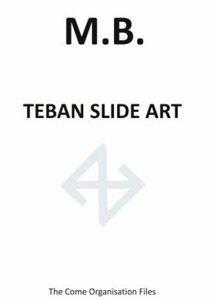 The material contained within this three disc compilation makes for a point of controversy in the noise and power electronics scene over 30 years since it first appeared. Some of Maurizio Bianchi's earliest material was sent to William Bennett's Come Organisation label for release. Before it finally appeared, the material was overlaid with Nazi propaganda speeches, and Bianchi was credited as Leibstandarte SS MB. Bianchi claimed it was done without his consent, while Bennett's contention was that it was how the albums were intended to be released and it was Bianchi's religious conversion soon after their release that triggered his dissatisfaction with the release. Regardless of the history, the resulting material is a mostly strong entry in Bianchi's early catalog.
The material contained within this three disc compilation makes for a point of controversy in the noise and power electronics scene over 30 years since it first appeared. Some of Maurizio Bianchi's earliest material was sent to William Bennett's Come Organisation label for release. Before it finally appeared, the material was overlaid with Nazi propaganda speeches, and Bianchi was credited as Leibstandarte SS MB. Bianchi claimed it was done without his consent, while Bennett's contention was that it was how the albums were intended to be released and it was Bianchi's religious conversion soon after their release that triggered his dissatisfaction with the release. Regardless of the history, the resulting material is a mostly strong entry in Bianchi's early catalog.
While who is right in this argument is not clear, it also does not affect the quality of these recordings.In fact, both sides seem to be justified at different points.Disc one, Triumph of the Will, seems to support Bianchi’s claim.The two long pieces without the speeches would work better:the churning, undulating electronics and simple, but effective rhythmic propulsion of the title piece would work much better on their own, and the melancholy, funereal organs of "To Birkenau" feel out of place amidst the abrasive propaganda.The previously unreleased bonus piece, "Ygolonhcet", has a cleaner, more bass laden sound, with an analog warmth and rattlesnake like synth passages that clearly sound of the same era.
Weltanschauung (which was partially available on the Susan Lawly Anthology 2 compilation of Come Organisation material), however, makes the inclusion of the speeches seem more calculated and artistically justified.Used sparsely, their appearance on "Under the Victory Banner" is nicely balanced by the ebb and flow of noise, mutually benefiting from one another."SS20 Attack" uses air raid siren-like electronics, bomb dropping synths and morose, bass heavy rumbles to fit the title perfectly."Zyklombie" features undulating, thumps and wet outbursts add to the discomfort, which becomes more of a pronounced nausea on "Plutoniumetrio".
Lebensraum seems like it was intended for a Come Organisation release, but never saw the light of day until an unofficial cassette tape release in the 1990s.It does feel conceptually somewhat incomplete, with Bianchi's thin, brittle electronics being cut between Come associate Jordi Valls discussing serial murderers in the first half, and even gets to be a bit like noodling prog rock keyboards at times.I do not think Bianchi actually donned a gold lamé cape during his performance, but it is probably the closest he ever got.The second half of the original cassette feels a bit more slapped together structurally, but his unmistakable depressive electronics and filtered bits of noise shine through.
It is rather surprising that this material ever managed to get a wider release, and from the sound of things, it was mostly culled from vinyl versions of the original releases, leading to an occasionally murky, time worn sound but considering who this is it feels completely appropriate.I do not think anyone looking to check out an early M. B. release is going to expect (or even want) an Eleh level of surgical sonic sterility.
It is irrelevant who made the decision that ultimately resulted in these releases, because their historical importance to a genre can not be overstated.A quick sampling of "Triumph of the Will" reveals where Genocide Organ got their initial sound, and the use of politically and morally ambiguous fascist associated imagery lead to Con-Dom, the Grey Wolves, and pretty much the whole Tesco scene.While the speeches used on Triumph of the Will do seem somewhat slapped on and a bit distracting, the use on Weltanschauung and the associated imagery work quite well, and do not feel at all like a celebration or support of fascism, but instead add to the uncomfortable yet compelling feel to the work as a whole.There might be historical precedent captured in this set, but also a good deal of pleasantly bleak, apocalyptic electronics from one of the early masters of the style.
samples:
 
Read More
- Administrator
- Albums and Singles
 For better or worse, this limited-edition vinyl release continues Important's tireless recent string of ultra-minimal drone albums.  Recorded over the course of several very late nights spent with his newborn daughter back in 2011, Lonely Women's Club is about minimal as it gets, essentially amounting to 40 minutes of one-chord organ drone with only the subtlest of variations.  While it is enjoyable for what it is, it definitely seems like the sort of album that several dozen other artists could have made, making it a somewhat exasperating effort for someone as talented as English.
For better or worse, this limited-edition vinyl release continues Important's tireless recent string of ultra-minimal drone albums.  Recorded over the course of several very late nights spent with his newborn daughter back in 2011, Lonely Women's Club is about minimal as it gets, essentially amounting to 40 minutes of one-chord organ drone with only the subtlest of variations.  While it is enjoyable for what it is, it definitely seems like the sort of album that several dozen other artists could have made, making it a somewhat exasperating effort for someone as talented as English.
Case in point: "Cigarette Burn" is little more than a less inspired repeat of the A-side's formula, again sustaining a neutral and gently oscillating organ chord for 20 minutes.  The only significant change is that English does not make any overt chord changes at all this time around.  Instead, the original chord drones on in a tranquil, near-static haze for the entirely of its duration.  There is a great deal of subtle activity taking place, as quiet tones drift in and out of the chord to make almost imperceptible changes in coloration, but it does not amount to anything quite as resonant or absorbing as its predecessor.  If this were a CD, I would say that it at least serves to sustain the immersive reverie of the album's first half, but it seems an awful lot like filler with the vinyl format–it makes far more sense to just keep repeatedly playing the A-side than it does to flip the record after 20 minutes.
Ultimately, it is impossible to critique this album without also critiquing the entire minimal drone genre: "Lonely Women's Club" is a fine addition to the canon, but it does not offer any real twist that would justify its existence in light of the many similar pieces that already exist.  Bluntly put, Lawrence English holding an organ chord for 20 minutes does not say anything that someone else holding a chord for 20 minutes has not already said.  The flaw with this record is not that English failed in his execution, but that he chose to operate within constraints that almost completely preclude discernible personality.  As such, Lonely Women's Club is essential only to rabid pastoral drone completists (if they exist) or fans of extreme subtlety (an oxymoron that it definitely delivers).  For everyone else, it is basically just a pleasant, uncharacteristic diversion: there are already better and more substantial minimal drone and/or Lawrence English albums out there waiting to be heard.
 
Read More
- Administrator
- Albums and Singles
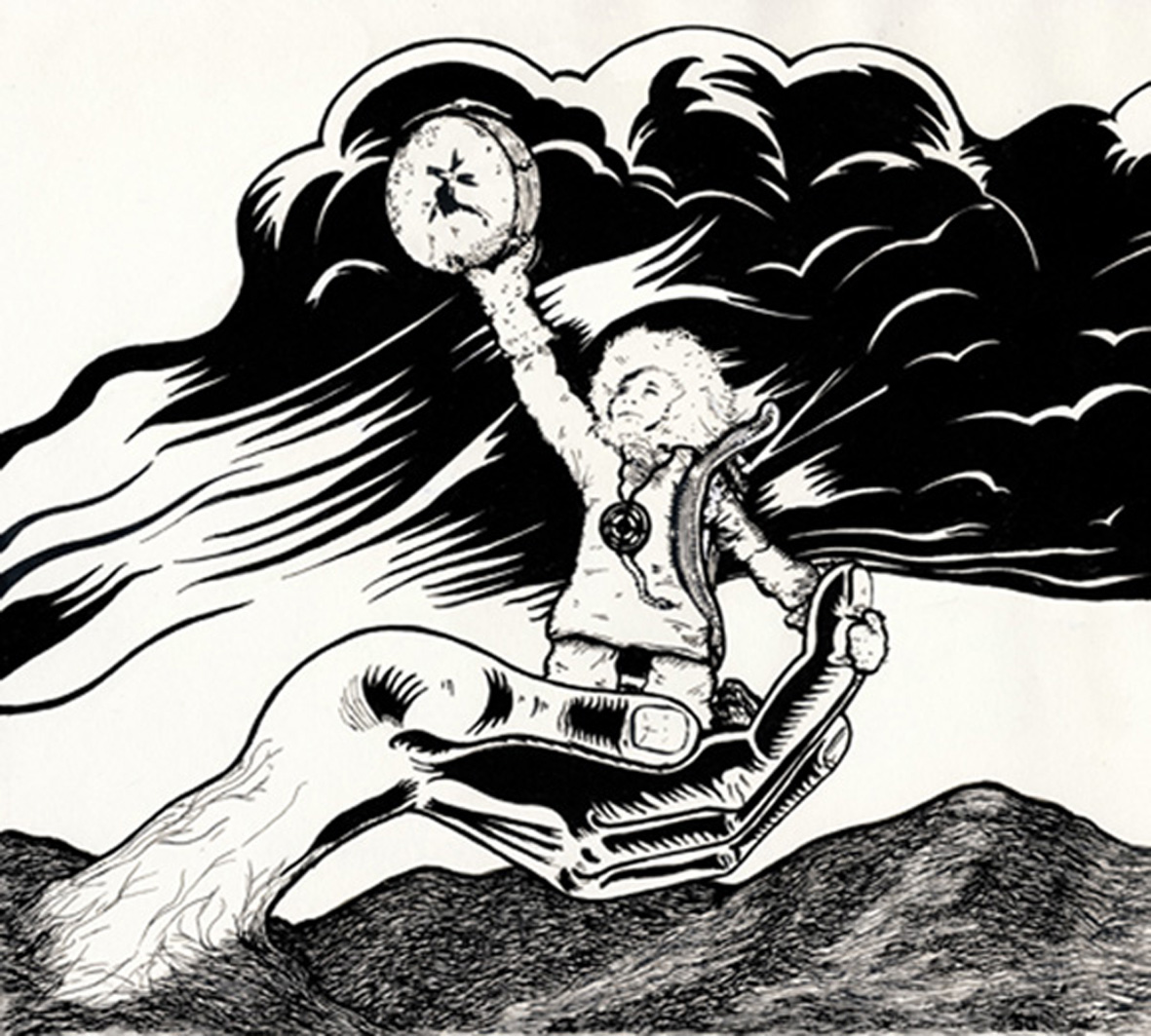 Ba Da Bing are clearly not ones to shy away from massive undertakings, following last year's 4LP Night Coercion into the Company of Witches reissue with yet another quadruple LP.  2008's The Snowbringer Cult was a monumental album for Natural Snow Buildings at the time of its release, as it was their first effort that was not available only as a hyper-limited cassette or CDr.  As such, it was many people's first exposure to the duo and Mehdi and Solange definitely set out to make it count, packing it with just about every single possible facet of their sound.  That "kitchen sink" approach does not make for the most listenable whole, but Snowbringer is not lacking in sustained stretches of absolute, otherworldly brilliance.
Ba Da Bing are clearly not ones to shy away from massive undertakings, following last year's 4LP Night Coercion into the Company of Witches reissue with yet another quadruple LP.  2008's The Snowbringer Cult was a monumental album for Natural Snow Buildings at the time of its release, as it was their first effort that was not available only as a hyper-limited cassette or CDr.  As such, it was many people's first exposure to the duo and Mehdi and Solange definitely set out to make it count, packing it with just about every single possible facet of their sound.  That "kitchen sink" approach does not make for the most listenable whole, but Snowbringer is not lacking in sustained stretches of absolute, otherworldly brilliance.
The original version of The Snowbringer Cult was released as a double CD by Students of Decay, a format that remains in place for this reissue.  The first disc contains a solo album by each member of the band, while the second disc is a lengthy collaborative effort.  Aside from the addition of a vinyl format, the reissue remains completely faithful to the original album in every way.  That was a wise decision, as only a lunatic would add bonus tracks to a 2 ½ hour album and the original art is thematically integral to the overall package (and also difficult to improve upon).  Also, remastering or "cleaning up" such a beautifully and uniquely produced album would be criminal.  The only truly significant change is that all three albums are now available as stand-alone releases, which makes them much easier to absorb.  That was a truly great idea.
The Isengrind album (Solange Gularte's solo project) is the shortest of the three, clocking in at just over half an hour.  Despite that comparative brevity, it contains many of the set's highlights, as Gularte was in the midst of a particularly fruitful creative period at the time.  With few exceptions, the mood is a very shadowy and ritualistic one, leaning very heavily on droning Indian stringed instruments, choruses of ghostly chanting, clattering percussive flourishes, and eerily discordant flutes and pipes.  On the best pieces, such as "To Ride with Hölle" and "Wooden False Face," Solange manages to sound so anachronistic and alien that it is actually far easier to imagine that this is an ancient field recording of a long-forgotten cult in the midst of a human sacrifice than the solo project of a contemporary French woman.  In fact, the latter often seems impossible.  The mesmerizing spell is disrupted only once, as the somewhat ill-advised "Cat's Cradle" dragged me reluctantly back to the present by drifting too closely to contemporary Freak Folk territory.  Happily, that song can easily be deleted from an iTunes library to leave a near-perfect album, but vinyl owners will just have to try to get used to it.
The Twinsistermoon half of the disc unsurprisingly shares a lot of common ground with Solange's effort, offering up still more occult-sounding drones, dissonant woodwinds, and tribal percussion.  There are some significant differences, however.  For one, Mehdi Ameziane's drone pieces are more dense and grinding than Solange's.  More significantly, those heavier pieces are interspersed with a number of melancholy and sweetly child-like acoustic ballads.  Another key difference is that the illusion of timelessness is not quite as effectively maintained as it is with the Isengrind portion, though that is mostly by design.  On songs like "Order of the Dreamt," Ameziane balances his more traditional instrumentation with roiling distortion and spacey flanging to create his own surreal headspace.  I am also quite fond of "Spells," which artfully combines Mehdi's talents for both ritualistic "funeral procession" percussion and cascading acoustic arpeggios.  The rest of the album is not quite on the same level, however, alternating between Mehdi's simple, eerie campfire songs and some lo-fi metallic drones.  Those remaining pieces are not exactly weak, but they are easily eclipsed by both Twinsistermoon's own post-Snowbringer work and the rest of this album (which is excellent).
I was very happy to learn that Ba Da Bing were making the Natural Snow Buildings' portion of The Snowbringer Cult available on its own, as it unquestionably one of the duo's finest albums and needs to be heard by itself (and with fresh ears) to be fully appreciated.  However, its original inclusion as the final disc of a three-way split release with the duo's solo projects was kind of an inspired idea, as it beautifully illustrated how the duo united was so much greater than the sum of its parts.  That is not necessarily true now, as both solo projects have evolved greatly in recent years, but Mehdi and Solange's collaborations still felt like a stunning and magical transformation back in 2008.  While I definitely like the Isengrind and Twinsistermoon segments of this collection, the Natural Snow Buildings portion of The Snowbringer Cult is an absolutely revelatory and dreamlike tour de force from start to finish.
Actually, "dreamlike" might be a bit misleading, as the opening "Resurrect Dead on Planet Six" (a cryptic Toynbee Tiles reference?) is much closer to a nightmare, building from queasily dissonant drones and flickering echoes into a roaring, visceral crescendo of guitar noise.  Structurally, it closely resembles some of Mehdi's solo work, but its execution is so complexly multilayered and seamlessly organic in its flow that it rises to a completely different level.  That trend basically holds for the entirety of the album: expected ideas are alchemically turned into otherworldly brilliance through ingenious layering and deft transitions (and it all sounds both massive and gloriously anachronistic).
With very few exceptions, almost all of these ten songs are highlights, a fact that is even more remarkable given the uncharacteristically varied stylistic territory covered.  "Inuk's Song," for example, is a gently rippling and hallucinatory reverie, while "Nieve Sacra" resembles a spacey, psych-damaged Morricone and "They Do Not Come Knocking There Any More" approximates a full-on tribal war march.  The more abstract title piece, on the other hand, basically resembles nothing else that earthbound mortals have recorded outside of Natural Snow Buildings–my best approximation would probably be "an ancient voodoo ceremony is sucked through a black hole and eventually re-emerges mashed up with the doomed Children's Crusade of 1212."  If there is a higher compliment for a piece of music, I certainly cannot think of it.
As was the case with Night Coercion Into the Company of Witches, The Snowbringer Cult is an absolutely exhausting and overwhelming listen in its entirety, which is its primary flaw.  There is way too much here to reasonably process and not all of it is great.  The similarities end there though: Night Coercion was a time capsule from a formative, largely unheard era of Natural Snow Buildings' career, while The Snowbringer Cult captures the duo at their absolute collaborative zenith.  The other major difference is that the best part of The Snowbringer Cult is now available by itself, no longer diluted by the inclusion of two full other albums worth of songs...and it is absolutely, screamingly essential.  The Isengrind/Twinsistermoon albums are perfectly fine, but the Natural Snow Buildings' third is a strong candidate for the best thing that anybody will release this year (reissue or otherwise). This is the kind of album that I would run into a fire to save.
 
Read More
- Administrator
- Albums and Singles

Artist: Emme Ya
Title: Chthonic Transmission (Abysmi Vel Daath)
Catalogue No: CSR175CD
Barcode: 5060174954115
Format: CD in jewelcase
Genre: Dark Ambient / Ritual
Shipping: 28th March
“Chthonic Transmission” is Emme Ya’s 2nd full-length album for Cold Spring. Ritual Dark Ambient with esoteric vocals and an archaic magickal energy.
“The album itself is an Alchemical process, in which I am descending and ascending, in a series of ritual visualisations under the veil of daath, being all such 6 stages of personal spheres of transmutative inner magickal paradigms, which are just part of the development of my own personalities, sexual feminine energies evoked and transmuted, with the sole purpose to transcend this existential reality in which I am submerged. Trying to explore in the sea of nothingness, searching my own inner light of self-creative power. Transforming, mutating, developing. Once again and again in a giant cosmic ouroborus… entering my parallel worlds eternally” (Emme Ya).
Tracks: 1. The Vortex Ov Primigenian Sun / 2. Chthonic Transmission (Abysmi Vel Daath) / 3. The Light That Is Not (Consecration Rite) / 4. Reversed Kundalini (Transmutation Rite) / 5. Descending To Astral Void (Solve Et Coagula) / 6. Emerging From The Grey Egg (Encircled In A Thousand Lanterns)
Read More
- Administrator
- Albums and Singles

Artist: Iron Fist Of The Sun
Title: Who Will Help Me Wash My Right Hand
Catalogue No: CSR175CD / CSR179LP
Barcode: CD: 5060174954115, LP: 5060174955365
Format: CD in jewelcase / LP on yellow vinyl in j-card sleeve
Genre: Power Electronics / Cold Electronics
Shipping: Now
New full length album by English artist IFOTS. Continuing on his path of exploratory yet focused industrial, and his trademark clean detailed power electronics that was first seen on his debut CD for Cold Spring, “Behavioural Decline”, “Who Will Help Me Wash My Right Hand” is a frantic mix of structure and chaos, less violent than previous releases but instead drenched in melancholy and bitterness.
Available on CD and LP limited to 200 copies on yellow vinyl.
Tracks: 1. For You I Will / 2. This Dog Has No Master / 3. Be Forever Green / 4. Saltpulse / 5. Who Will Help Me Wash My Right Hand
Read More
- Creaig Dunton
- Albums and Singles
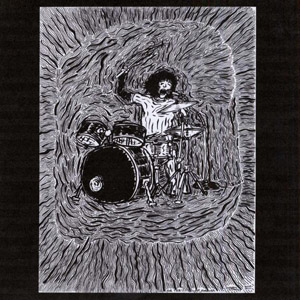
A loving tribute to experimental percussionist Matt Weston's collaborator Teri Morris (of Crystallized Moments and Tizzy), the two pieces that make up this 7" showcase his strengths as a one-man band, while crafting a pair of songs that are as independently captivating as they are touching.
The A side, "Coiling for the Kickback" quickly locks into a repeating, garage rock like groove, with Weston’s understated guitar playing and rock solid percussion keeping things focused, but occasionally drifting into tastefully sloppy, punk influenced material.
"Walking Through the Undertow" kicks things off more abstract, with cut-ups of cheesy organ, cheap drum machine rhythms and solid live drumming before eventually coming together in an ever so slightly jazz-dub-tinged overall sound.Both songs conclude with some of the raucous, and overall much upbeat material being underscored by an ever so slightly sad, mournful melody that adds an appropriate reverence to the otherwise celebratory work.
Read More
- Administrator
- Albums and Singles
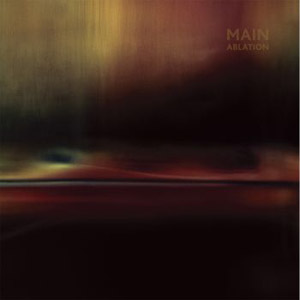 Capping off Robert Hampson's impressive return to activity with three recent solo releases on the Editions Mego, he has now officially resurrected the Main moniker, here in partnership with Stephan Mathieu. Ablation is consistent with the recent Hampson solo albums, but feels like a natural extension to the more abstract previous Main material, making for an appropriate new phase in the project's trajectory.
Capping off Robert Hampson's impressive return to activity with three recent solo releases on the Editions Mego, he has now officially resurrected the Main moniker, here in partnership with Stephan Mathieu. Ablation is consistent with the recent Hampson solo albums, but feels like a natural extension to the more abstract previous Main material, making for an appropriate new phase in the project's trajectory.
A defining feature of Main for me is how organic it sounded, even if the music contained within seemed completely alien.It was the sound of cells dividing, ice molecules separating, or galaxies expanding.This living, breathing touch was not necessarily missing from the solo material Hampson put out, but felt more obscured overall."I" embraces the natural, with Mathieu's contributions of organ and phonoharp keeping the sound more flesh and blood rather than clinical or detached.
Even more surprising on "I" is the presence of conga-like percussion and some entropy-laden dissonance, the latter resulting in a harsher, more abrasive sound than usual from a Main recording."II" alternates between rising tides of dissonance and cold, disconnected beauty.It results in a dense wall of sound, but one that constantly flows and changes into different forms throughout, logically progressing from one mood to the next.
The second half of the album puts less of an emphasis on the constantly changing and evolving layers of sound, and instead focuses on longer, sustained passages that slowly breathe and develop in a less overt manner."III" mixes things up the most, where cosmic, expansive passages of calm sound are upset by what could only be described as the sound of a runaway freight train cutting right through the mix, tearing the more delicate pieces asunder before they reassemble themselves once again, maintaining some semblance of consistency.
The conclusion stays pegged into the loud and forceful realm, building to a dynamic intensity that rivals the best harsh noise recordings in approach, but is far more nuanced overall."IV" scales things back, filtering more musical textures through crackling static and surging low end swells.With the high frequency beeps and shimmering feedback, it makes for a nice callback to the Firmament series of releases without sounding like an attempt to recreate them.
Robert Hampson has never ceased to amaze me with his work, and while bringing back the Main name was unexpected given his expanding body of work under his given name, the result removes any doubt anyone could have.The solo outings never quite felt totally like the classic Main albums, and I curious how new material would differ being issued so recently after Suspended Cadences and Signaux, but there is a distinctly different feel to Ablation.
Part of this might be his re-embracing of the electric guitar, or the contributions of Stephan Mathieu, a brilliant solo artist in his own right, working in similarly organic realms with different results.Ablation lives up nicely to its expectations, making for a worthy addition to the untouchable Main discography.While it seems less and less likely to happen,I would still love to hear some more of the bass/guitar/vocals skeletal rock material that ended with Neper.Maybe Hampson’s upcoming dates with Godflesh, reprising his role from Pure some two decades ago may spark a new project of this approach, but even if it does not, I am still satisfied with this.
samples:
 
Read More
- Administrator
- Albums and Singles
 Having been active for over a decade and a half, Stephen Petrus' Murderous Vision alter ego has been a pillar in the US death industrial scene, creating a body of work that captures the essence of the likes of Brighter Death Now or Anenzephalia, but sounding completely original. Perhaps it is the fact that the material is not coming from the central European region but home grown out of Ohio, which is in itself a distinct industrial wasteland.
Having been active for over a decade and a half, Stephen Petrus' Murderous Vision alter ego has been a pillar in the US death industrial scene, creating a body of work that captures the essence of the likes of Brighter Death Now or Anenzephalia, but sounding completely original. Perhaps it is the fact that the material is not coming from the central European region but home grown out of Ohio, which is in itself a distinct industrial wasteland.
"Echoes of Hollow Agony" captures that Cold Meat Industries sensibility perfectly, coming together as a dark and dissonant, but not overly menacing composition, slowly building in intensity as far off sounds make for a disorienting, bleak mass of cavernous noise."Finding Death at the Crossroads of Life" follows, covering layers of synth in reverb and delays, with monstrous like noises appearing here and there to keep tensions high.At times its understated nature lets it fall into the background somewhat, but just as it happens, some creeping, unidentifiable noise pushes it back into focus.
"A Whisper Becomes a Shiver" goes industrial in the more literal sense, with what sounds like machinery clanking away amid blasts of textural static offsetting the piece.There may be vocals lurking somewhere in the mix, but so heavily processed and treated that it sounds like any other reshaped sound, while depressive melodies slowly play from the blackness."The Soul Confined" comes off like a throwback to another titan of the genre, with its filtered rhythmic throb conjuring memories of Maurizio Bianchi’s earliest (and best) work.
The final two pieces are where things get mixed up, in a very good way."You" opens sparse and hushed, keeping far off vocals at bay in the mix.Heavy synthetic rhythms come to the forefront however; giving a different overall push to the song that lets intensity build slowly around it.Finally, "The Horned Beast of Golgotha" (previously released as half of a split cassette) goes completely manic, loading in samples, an oddly upbeat bass and drum rhythm, and waves of noise that push it into full on harsh noise walls type sounds, even while the odd rhythms continue to pound away.
Petrus has been consistently honing his sound throughout his career, with the earlier work not quite standing out as distinctly as it could have amid the heavy reverb and dark ambient sensibilities, but recent work has seen him find his own voice.By integrating his influences into the overall sound, but putting his own unique, personalized approach to the sound in his art.Awash in gothic imagery, but free of the associated pretense, this album is a highpoint in a consistently impressive career.
samples:
 
Read More
- Administrator
- Albums and Singles
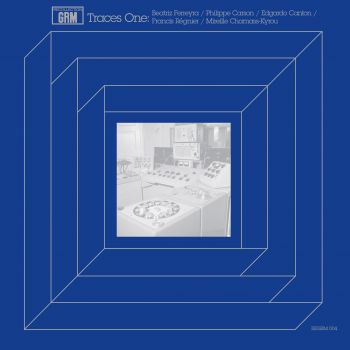 These two compilations highlight some of the lesser-known composers who have worked at the Groupe de Recherches Musicale (GRM) in Paris. The first volume charts some of the obscurities of the 1960s while the second volume concentrates on works from the 1970s. Taken together, the Traces collections are a fascinating parallel to the reissues of major GRM albums that Recollection GRM have been doing, showing that equally maverick work was been done by names less familiar than Pierre Schaeffer or Luc Ferrari.
These two compilations highlight some of the lesser-known composers who have worked at the Groupe de Recherches Musicale (GRM) in Paris. The first volume charts some of the obscurities of the 1960s while the second volume concentrates on works from the 1970s. Taken together, the Traces collections are a fascinating parallel to the reissues of major GRM albums that Recollection GRM have been doing, showing that equally maverick work was been done by names less familiar than Pierre Schaeffer or Luc Ferrari.
Traces One begins in fine style with Beatriz Ferreyra’s "L’Orvietan," a deeply atmospheric piece from 1970 that moves between two approaches during its course. The first half is given over entirely to electronic music which sounds unnervingly like the noises that open "The Avatars" from Coil’s 1999 masterpiece Astral Disaster. However, Ferreyra pushes the listener further and further from their comfort zones as her music gets more intense as it progresses. The switch from electronic to concrète makes things stranger still, the vaguely humanoid sounds becoming a presence in the room which cannot be ignored.
Ferreyra’s oddly organic work is contrasted by Philippe Carson’s 1961 piece "Turmac" which takes the sounds of a cigarette manufacturing plant as its base. The mechanical, rhythmic work attempts to take the obviously machine-derived recordings and subject them to various stages of manipulation in order to detach the music from its source. It is still as alien sounding as Ferreyra’s piece but in a completely different way. Here, the idea of musique concrète is given full focus as Carson utterly breaks down the boundaries between factory noise and music.
Atmosphere continues to be an important concept on side B as Francis Régnier’s "Chemins d’avant la Mort" can testify to. A meditation on dying, it builds from almost silence with Régnier increasing the intensity to a level that would satisfy Merzbow before dropping off to a death-like silence, with only the barest, tinnitus-like ringing left. It is the shortest piece here but undeniably the one with the most impact. It leads quite perfectly into Mireille Chamass-Kyrou’s "Étude I" from 1960. This comes across as more of a technical exercise compared to the other pieces on Traces One but it is interesting beyond the techniques. Again, the power of the music stretches beyond the sounds heard and into the feelings generated in the room it is being played; Chamass-Kyrou acting as a psychologically minded composer rather than a musically minded one. It is a pity that no other pieces by her seem to exist (this piece was included on an INA GRM box set about ten years ago and that’s it) as "Étude I" is so tantalising in its possibilities.
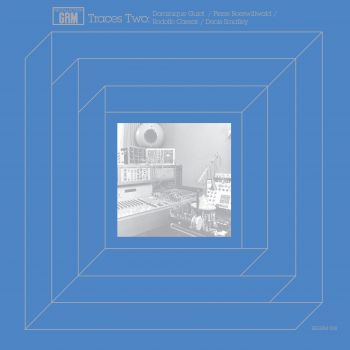 Traces Two shifts the time frame forward by ten years and the difference is immediately noticeable in Dominique Guiot’s "L’Oiseau de Paradis" from 1974 which is as colourful as its title suggests. Guiot attempts to musically reproduce the fast edits and sudden scene changes of film with great success, the dramatic turns that run through the piece make it almost impossible to break my attention away to do anything else (such as writing this review!). Aside from its form, it is obvious that a new era had begun in the GRM as the instrumentation sounds so much more modern and controlled here compared to the pieces on Traces One and Guiot uses these tools to his advantage, creating exciting textures that truly do sound like the future even today.
Traces Two shifts the time frame forward by ten years and the difference is immediately noticeable in Dominique Guiot’s "L’Oiseau de Paradis" from 1974 which is as colourful as its title suggests. Guiot attempts to musically reproduce the fast edits and sudden scene changes of film with great success, the dramatic turns that run through the piece make it almost impossible to break my attention away to do anything else (such as writing this review!). Aside from its form, it is obvious that a new era had begun in the GRM as the instrumentation sounds so much more modern and controlled here compared to the pieces on Traces One and Guiot uses these tools to his advantage, creating exciting textures that truly do sound like the future even today.
While taking a more traditional musique concrète approach, Pierre Boeswillwald’s "Nuisances" from 1971 also takes a less than traditional approach to composition by focussing on the mistakes and the sounds that are the opposite of what he would select if he was to do this based on what sounded best. On paper, it sounds like he invented glitch music in the early '70s but "Nuisances" sounds very different to what we would consider glitch or even noise now. It actually sounds rather great and to my ears, is totally in keeping with what Bernard Parmegiani has been doing with the GRM over the course of his career. Out of the four pieces included on Traces Two, it stands out as being the most conservative (though obviously that term is used very loosely even in this context!).
Rodolfo Caesar’s "Les Deux Saisons" could have been made in the last ten years. A seemingly simple layering of tones, it is actually a complex work of recording and manipulating idiosyncratic instruments over a course of two years. Combining sounds generated from the Baschet brothers’ cristal baschet (an "organ" composed of rotating glass rods tuned chromatically and played with moistened fingers that was popular amongst composers in the GRM) and a frequency modulator, Caesar achieves a most unusual and haunting sound that sits somewhere between pure electronic music and natural acoustics.
Traces Two concludes with "Pentes by Denis Smalley. Recorded at around the time Smalley was finishing up one of the very first diplomas in electroacoustic music, the piece sounds sophisticated in its use of complex manipulations of recorded sound along with relatively untreated bagpipes to create a harmonically rich environment which feels at home both in the future and the past. The appearance of the pipes towards the end is like a phantom slowly appearing from within a deep fog, leading the listener home.
While I am impressed with the Recollections GRM label in general, these two compilations are clear winners in my mind in their scope and the fact that this is mostly unknown music to most listeners aside from seasoned electroacoustic collectors. Even then, some of these pieces are previously unissued or buried in dense compilation sets and given little or no space to be explored. Presented here in these relatively uncluttered albums, it is possible to get a deeper understanding of the range of work being undertaken at the GRM and being able to hear beyond the more famous works by its brightest stars.
 
Read More
- Administrator
- Albums and Singles
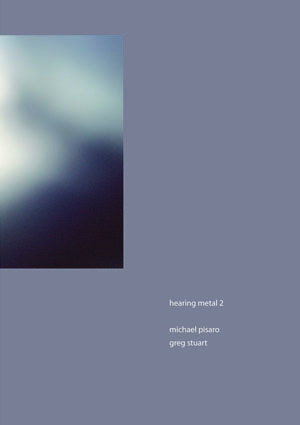 It may be that hearing metal means something different than hearing music. Like the Constantin Brâncuși sculpture to which its subtitle refers, Michael Pisaro's Hearing Metal 2 subsists more in the grain and shape of its materials and less in the will of its author. It is composed and performed, and has a beginning and an ending, but it doesn't move from left to right like a song. It feels and sounds more like a space that I can walk through, my position and my frame of mind determining how—and what—I hear.
It may be that hearing metal means something different than hearing music. Like the Constantin Brâncuși sculpture to which its subtitle refers, Michael Pisaro's Hearing Metal 2 subsists more in the grain and shape of its materials and less in the will of its author. It is composed and performed, and has a beginning and an ending, but it doesn't move from left to right like a song. It feels and sounds more like a space that I can walk through, my position and my frame of mind determining how—and what—I hear.
Inspired by Greg Stuart's close recordings of the 60" tam-tam used in Karlheinz Stockhausen's Mikrophonie I, Michael Pisaro's Hearing Metal series began as project dedicated to hearing the inner life of apparently uniform sounds. The association with Brâncuși sculptures came when he realized that the physical material of his chosen instruments expressed particular qualities or affects on their own—as if a sense of the material were coming through the music. As he explains on his blog, "Any sound, even the simplest, is already (ontologically) multiple. But the multiplicity requires a succession of events to be heard: by extending, repeating, adding and subtracting, one begins to experience the sound more like a verb than like a noun."
I think of that last claim every time I listen to Hearing Metal 2. On the one hand, Pisaro and Stuart's assortment of cymbals, gongs, brake drums, and various metal objects resound together like a single instrument. Listening is like watching a metal sculpture rotate in place. If I sit in one spot and watch it spin, different aspects of its form slide into view and fall away like a slideshow. But if I get up and investigate, peer at it closely, or fix my attention on one of its sides, new qualities pop out. They were always there, but finding them depends on interacting with the piece and not just letting it slide by the way songs typically do. Thanks to the way Pisaro has arranged his sounds, this sculptural feeling is sustained throughout the piece's long, central metallic passage. There are no crescendos or obvious dynamic markers—just the varying qualities of different textures playing against the hum of a central, pitched core. There are quieter and noisier moments, but they don't add up to something bigger and tip the composer's hand.
On the other hand, Hearing Metal 2 unfolds in time and needs time to make sense. The music doesn't resound all at once, and I can't actually walk around it the way I would a sculpture, so I have to listen to what it does. That's when the metal instrumentation begins to express something like an inner life: little networks of rhythm spill out of the otherwise chaotic jumble of junkyard sounds and apparently fixed tones wobble back and forth like they're walking on a tightrope; odd sounds are cast to the periphery and others are pushed to the center as the metal rolls and twists in circles, something Pisaro's stereo mix captures extremely well. But all this happens of its own accord, seemingly without Michael or Greg's influence. The music stops progressing from beginning to end and starts acting, stretching out in different directions, and evolving. The illusion Pisaro and Stuart create is that they had nothing to do with it. The sound was there the whole time, all they did was capture it.
Framing the 40-plus minute core of Hearing Metal 2 are two blocks of field recordings and other seemingly non-metallic sounds. The longer, first section captures oceans and rivers tossing and bubbling in undisclosed locations. Strange, almost psychedelic test tones beam in from outer space. A church organ hums. Sine waves peak out of the silence and succumb to the movement of a stream down a muddy bank. The humming metal doesn't start until over 16 mintes in, and by then it feels as if we've been guided down a waterway just to see this huge edifice Pisaro's built. When it ends, we're brought back to the sounds of running water and chirping birds. It's a reminder that hidden sounds are all around us, and that how we listen is as important as what we hear.
samples:
 
Read More
- Administrator
- Albums and Singles
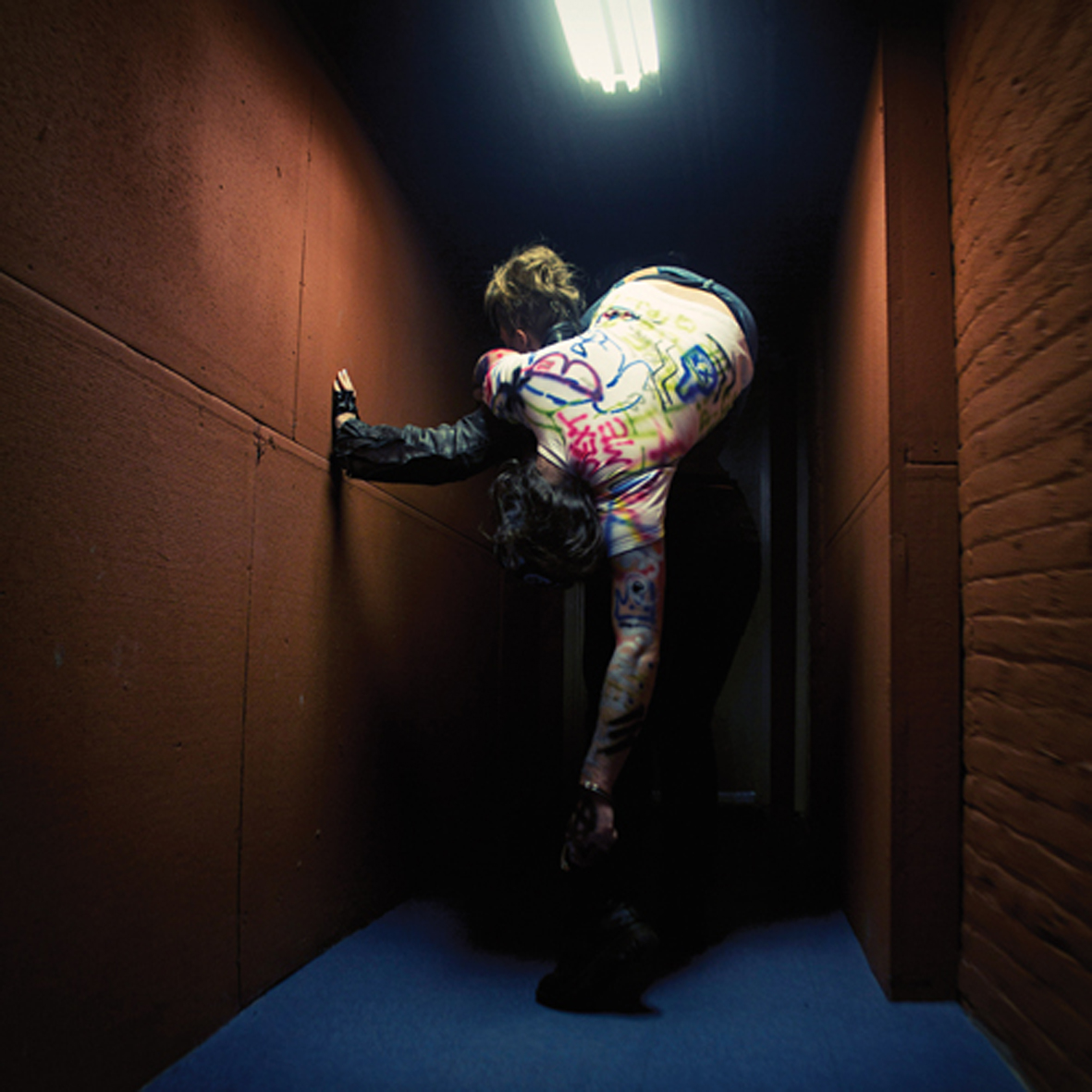 It has been quite a while since Swanson's last major statement (2011's Man With Potential) and that situation that has not been changed by the release of this 4-song EP (which is only slightly longer than last year's excellent Pro Style 12" single).  Punk Authority shows some very promising evolution though, ingeniously tweaking Pete's love of thumping four-on-the-floor beats while significantly cranking up the punishing brutality.  In theory, that should make for yet another great Pete Swanson release (and it arguably does), but the content is not always on the same level as the leap forward in style, making this EP sometimes feel comparatively bloated and light on hooks.
It has been quite a while since Swanson's last major statement (2011's Man With Potential) and that situation that has not been changed by the release of this 4-song EP (which is only slightly longer than last year's excellent Pro Style 12" single).  Punk Authority shows some very promising evolution though, ingeniously tweaking Pete's love of thumping four-on-the-floor beats while significantly cranking up the punishing brutality.  In theory, that should make for yet another great Pete Swanson release (and it arguably does), but the content is not always on the same level as the leap forward in style, making this EP sometimes feel comparatively bloated and light on hooks.
Punk Authority begins in absolutely brilliant fashion with the title piece, as Swanson unleashes a lopsided, lurching beat amidst an avalanche of distorted sub bass, insistently repeating bleeps, and metallic-sounding groans.  Characteristically, the kick drum is bludgeoning and ribcage-rattling, but the overall feel is light years away from the dancefloor.  Rather, "Punk Authority" sounds more like a hyper-dense take on early industrial, as its crunching, odd-time beat amidst the surrounding chaos strongly evokes a factory full of massive machinery gradually malfunctioning and falling apart.  Which, of course, is awesome.  In fact, it might be the single best thing that Swanson has ever recorded.  Unfortunately, Punk Authority's momentum begins to rapidly flag with the second song.  While I love how gleefully ravaged and blown-out everything in "C.O.P." sounds, suffocating ugliness alone is not quite enough to sustain a piece for  7+ minutes.  By the halfway point, it is clear that Pete has said everything he is going to say and it all starts to feel very plodding and repetitive.
Thankfully, the remaining two pieces are a bit better, even if they fail to make an impact as great as the opener.  "Grounds for Arrest" departs from the EP's template by featuring a recognizable house beat, but Swanson uses it artfully rather than bluntly, stopping and starting it to again mimic an increasingly unstable piece of massive machinery.  It also boasts a number of other cool features, like well-timed sizzles of static; thick, insistently burrowing bass; and some very ruined-sounding synth melodies.  In fact, the only thing stopping it from approaching the brilliance of the title salvo is that it winds down after just over 3 minutes without ever evolving much.
The 13-minute closer "Life Ends at 30" suffers from exactly the opposite problem, as it badly overstays its welcome (it is almost as long as the other 3 songs combined).  That is hugely exasperating, as Swanson again makes inspired use of a house beat, jacking up the distortion and crunch so much that it sounds far more like a rock crusher than a dance beat.  Everything else about the song is equally extreme and overloaded, which is why the duration is a problem–it is an absolutely exhausting and unrelenting sensory assault.  Music this one-dimensionally bulldozing needs to be brief to maximize its impact, as such a densely punishing torrent of sound becomes very deadening very quickly.  Some of the individual parts are absolutely crushing though–a more condensed edit could have been a stone-cold classic of relentless, mechanized brutality.
Ultimately, Punk Authority occupies the rarefied territory of a release that is equal parts masterpiece and misfire.  Both the aesthetic and the production are on a level that towers above nearly everyone else currently making beat-driven noise: no one else sounds like this...and even if they did, they would not sound nearly as great doing it.  I honestly do not know what Swanson could possibly do that would top "Punk Authority," nor do I think most of the remaining pieces could have been any heavier.  Swanson's sole misstep seems to have been releasing this EP before the songs were fully perfected, as most pieces are either too long or too short and the weakest ideas are perversely given the most time.  As far as I am concerned, Swanson's evolution can stop here: he has found the perfect aesthetic–now he just needs to perfect the songs.
 
Read More

